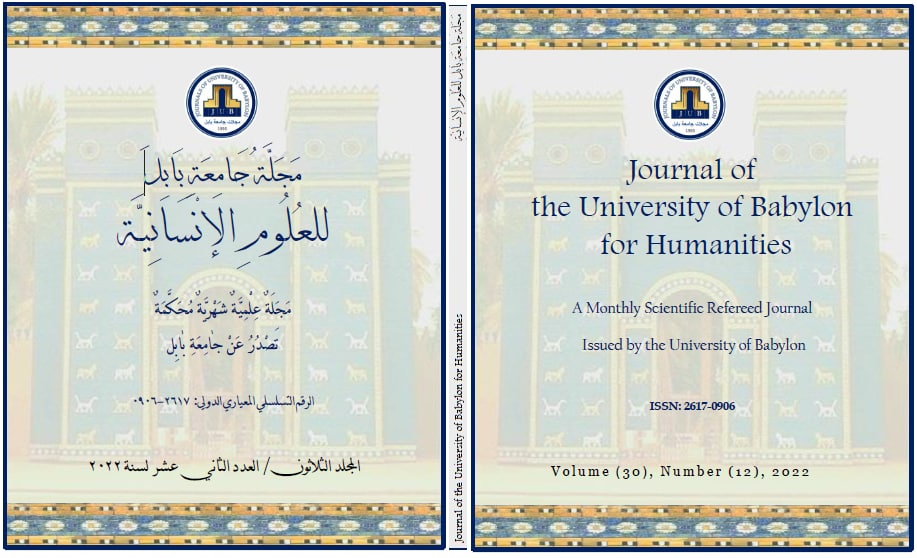Strategies of Contempt and Loathing in the Qur'anic Expression: A Study of Structure and Content
Main Article Content
Abstract
Research problem: Defining hatred and contempt, and what are the motives behind them? What are the ways in which each of them is embodied?
The study was divided into three sections with a preface in which it touched on the concepts of (hate and contempt) as well as their motives. The first topic was entitled: (hate and contempt in explicit words), while the second topic was entitled (hatred and contempt). Metonymy and some indicative words) I studied in the first section hate and contempt in the way of metonymy, and in the second section presented the words denoting hatred or contempt, including (cursing, indignation, supplication, resentment As for the third and final topic, it was entitled (Loathing and Contempt by the Interrogative and Arrogant Methods). Perhaps one of the most important findings of the research process is that (hate and contempt) are among the prominent meanings in the Qur’anic expression, and the significance of their presence is not limited to their explicit words, and that some of the words fulfill the connotations of hatred and contempt, such as indignation., cursing, and slande
The connotation of hatred or contempt may be coupled with insult، as in the word (dua), which means to push violently with insult, as the contempt connotation is achieved in an interrogative manner. To the audience, the sign of veneration and respect was achieved, and vice versa, as the transition from direct speech to speech of backbiting suggests hatred and contempt.

